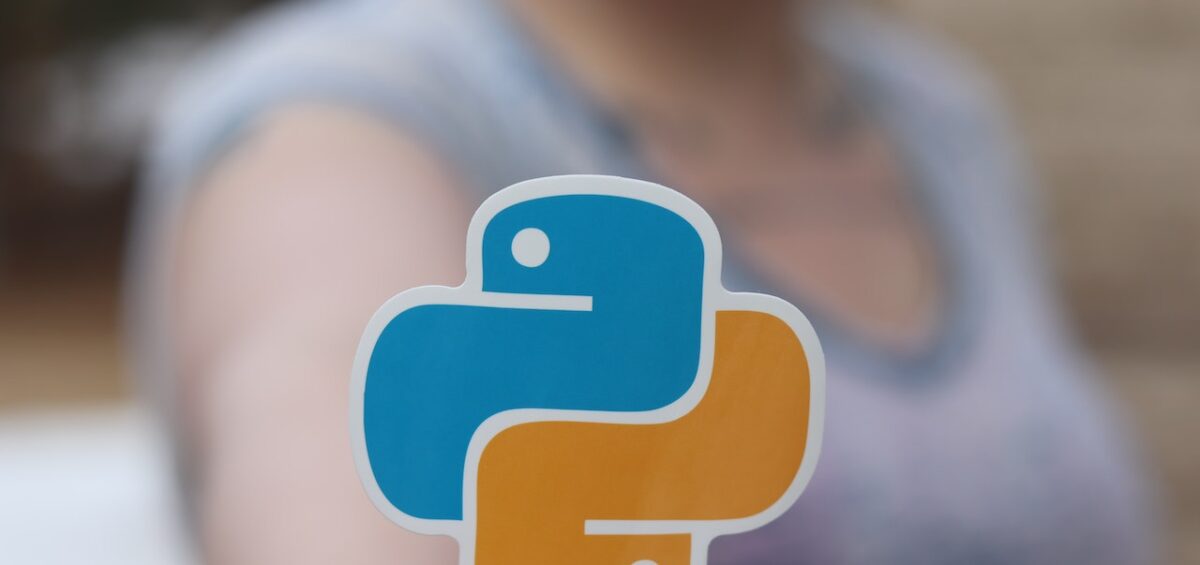What is Python Programming Language
Python programming refers to the process of writing, designing, and creating software applications using the Python programming language. Python is a versatile, high-level programming language known for its simplicity, readability, and wide range of applications. It was created in the late 1980s by Guido van Rossum and has since gained immense popularity in various domains, including web development, data analysis, scientific computing, artificial intelligence, automation, and more.
Key features and aspects of Python programming include:
Readability:
Python’s syntax is designed to be easily readable and clear, which makes it a great choice for beginners and experienced programmers alike.
Versatility:
Python supports a wide range of programming paradigms, including procedural, object-oriented, and functional programming styles.
Large Standard Library:
Python comes with a comprehensive standard library that provides modules and functions for various tasks, making it easier to perform common operations without reinventing the wheel.
Third-Party Libraries:
Python has a vast ecosystem of third-party libraries and frameworks that extend its capabilities for specialized tasks, such as web development (Django, Flask), data analysis (Pandas, NumPy), machine learning (TensorFlow, PyTorch), and more.
Interpreted Language:
Python is an interpreted language, meaning that code is executed line by line by the Python interpreter. This allows for interactive development and rapid testing.
Cross-Platform:
Python is available on various operating systems, including Windows, macOS, and Linux, allowing developers to create applications that can run on different platforms.
Community Support:
Python has a large and active community of developers, which means you can find ample resources, tutorials, and forums to seek help, share knowledge, and collaborate on projects.
Open Source:
Python is an open-source programming language, meaning that its source code is freely available, and developers can contribute to its development and improvement.
Easy Integration:
Python can be easily integrated with other programming languages and technologies, making it a great choice for building complex and interconnected systems.
Python’s simplicity and versatility have made it a go-to language for various projects, from building simple scripts to creating large-scale web applications, scientific simulations, data analysis tools, and even advanced machine learning models. Whether you’re a beginner learning to code or an experienced developer exploring new technologies, Python offers a robust foundation for creating a wide range of software applications.
How to learn python programming
Learning Python programming can be a rewarding journey, whether you’re a complete beginner or already have some coding experience. Here’s a step-by-step guide to help you get started:
Understand the Basics:
Familiarize yourself with what programming is and how it works. Learn about variables, data types, and basic operations like arithmetic and string manipulation.
Choose Learning Resources:
Online tutorials, interactive platforms, and books are great resources. Some popular options include Codecademy, Coursera, edX, Udemy, and Python’s official documentation.
Install Python:
Download and install the latest version of Python from the official Python website (https://www.python.org/downloads/). You can choose between Python 3.x and Python 2.x, but it’s recommended to start with Python 3.x as it’s the current and more supported version.
Learn Syntax and Control Structures:
Study Python’s syntax, including indentation, comments, and basic control structures like if statements, loops, and functions.
Practice, Practice, Practice:
Programming is learned through hands-on experience. Write and run code regularly to reinforce your understanding.
Start with small projects or exercises to build confidence.
Explore Data Types and Structures:
Learn about lists, tuples, dictionaries, and sets, which are fundamental data structures in Python.
Study how to manipulate and iterate over these structures.
Object-Oriented Programming (OOP):
Understand the basics of object-oriented programming, including classes, objects, inheritance, and encapsulation.
Work with Libraries and Modules:
Explore Python’s standard library and third-party libraries to extend your capabilities.
For example, learn about modules for file handling, regular expressions, and more.
Learn About Error Handling:
Discover how to handle exceptions and errors in your code to make it more robust and user-friendly.
Create Projects:
Apply your knowledge by building small projects. Projects can range from creating a simple calculator to building a basic web application.
Version Control:
Learn about version control systems like Git to track changes and collaborate effectively with others.
Advanced Topics (Optional):
As you become more comfortable with Python, you can explore more advanced topics like web development, data analysis, machine learning, and more.
Participate in the Community:
Join coding forums, attend local meetups, and participate in online communities to share experiences and learn from others.
Read Code:
Study open-source projects and read other people’s code to gain insights into different coding styles and techniques.
Stay Curious and Patient:
Learning programming takes time and effort. Stay patient, curious, and don’t hesitate to seek help when needed.
Remember that learning programming is an iterative process. Don’t be afraid to make mistakes, as they are an essential part of the learning journey. Start small, build your skills gradually, and celebrate your progress along the way.
Uses of python programming
Python programming is incredibly versatile and has found applications in a wide range of fields and industries.
Here are some of the key uses of Python:
Web Development:
Python is used to build dynamic and interactive websites and web applications. Frameworks like Django and Flask make web development efficient and scalable.
Data Analysis and Visualization:
Python, along with libraries like Pandas, NumPy, and Matplotlib, is widely used for data manipulation, analysis, and visualization. It’s a favorite tool among data scientists and analysts.
Machine Learning and Artificial Intelligence:
Python’s libraries such as TensorFlow, Keras, and PyTorch are used for developing and deploying machine learning and AI models for tasks like image recognition, natural language processing, and more.
Scientific Computing:
Python is popular in scientific research due to libraries like SciPy and NumPy that provide tools for mathematical calculations, simulations, and solving complex scientific problems.
Automation and Scripting:
Python’s simple syntax makes it ideal for writing scripts that automate tasks, streamline workflows, and perform repetitive actions.
Game Development:
Python is used to develop 2D and simple 3D games. Libraries like Pygame provide tools for creating games and interactive applications.
Desktop Applications:
Python can be used to create cross-platform desktop applications using frameworks like Tkinter and PyQt.
Cybersecurity:
Python is used for tasks like penetration testing, ethical hacking, and developing security tools due to its extensive libraries and ease of use.
Networking:
Python is used to build network applications, automate network device management, and perform network analysis.
Robotics:
Python is used in robotics for controlling robots, simulations, and developing algorithms for robotic systems.
Financial Analysis:
Python is used in quantitative finance for tasks like data analysis, risk management, and algorithmic trading.
Internet of Things (IoT):
Python is employed for developing applications for IoT devices due to its simplicity and compatibility with embedded systems.
Educational Purposes:
Python’s ease of learning makes it a popular choice for introducing programming concepts to beginners and students.
Natural Language Processing (NLP):
Python is used for processing and analyzing human language data, enabling applications like chatbots, language translation, sentiment analysis, and more.
GIS (Geographic Information Systems):
Python is used to work with geospatial data, create maps, and perform spatial analysis.
These are just a few examples of the many ways Python is used across various domains. Its versatility, extensive libraries, and active community make it a powerful tool for solving a wide range of challenges and creating innovative solutions.




Leave a Comment